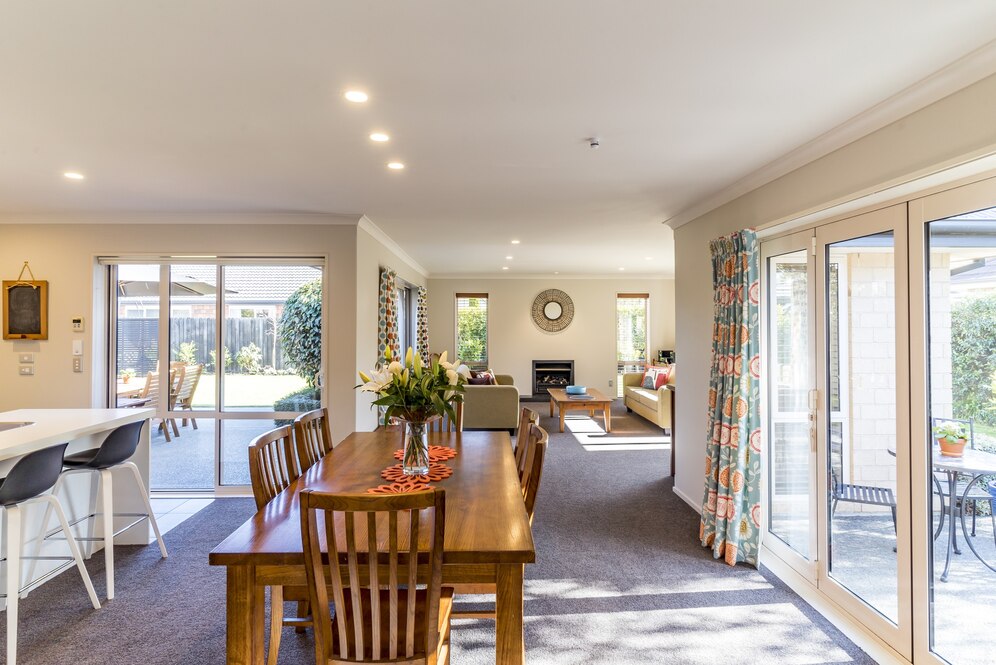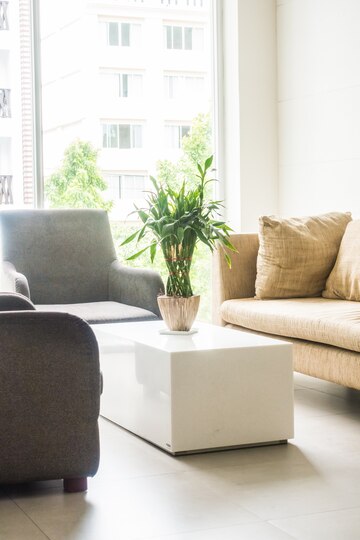Introduction
In the tropical climate of the Philippines, natural light is a precious resource. Not only does it make any space feel more airy and open, but it also has numerous health benefits for the occupants. If you’re looking to increase natural light in your house and lot, we have got you covered.
In this article, we will explore a comprehensive list of ways to bring more natural lighting into your home and transform it into a bright and uplifting sanctuary.

Top 7 Ways of How to Maximize Natural Light in Your Home
Tip #1: Assessing Your Current Natural Light Situation
Start by examining the windows in each room. Are they large enough to allow ample light to enter? Are there any nearby structures or trees that may be blocking the sunlight? If so, consider pruning or removing any obstructions to allow more light to filter through.
Additionally, take note of the orientation of each window. South-facing windows receive the most sunlight throughout the day while north-facing windows receive less direct light.
Another aspect to consider is the layout and design of your home. Are there any interior walls or partitions that are blocking the flow of light from one room to another and keep it from reflecting light? If possible, consider reconfiguring your space to create an open floor plan that allows light to travel freely.
Understanding these factors will help you determine which areas of your home need the most attention when it comes to maximizing natural lighting.
Tip #2: Utilizing Window Treatments for More Natural Light
Window treatments can play a crucial role in maximizing natural light while still maintaining privacy and controlling glare. Opt for sheer or light-colored curtains that reflect light and allow sunlight to filter through while diffusing harsh rays.
Avoid heavy drapes or dark-colored blinds that can obstruct the flow of light in a room and into your space. If privacy is a concern, consider using frosted or translucent window film or glass blocks which allows light to pass through while obscuring the view from outside. White sheer curtains can also do the trick since color White reflects light.
Another option to consider is installing window treatments that can be easily adjusted throughout the day. This will allow you to control the amount of light entering your home based on your preferences and the position of the sun.
Venetian blinds, roller shades, or adjustable shutters are excellent choices that provide flexibility in managing natural light.
Tip #3: Choosing the Right Light Bulbs and Fixtures
While natural light is ideal, there will inevitably be times when artificial lighting is necessary. To create a seamless transition between natural and artificial light, it’s essential to choose the right light bulbs and fixtures.
Other than energy efficiency, LED bulbs with a high Color Rendering Index (CRI) mimic the natural spectrum of sunlight and provide a warm and inviting glow. Avoid cool or blue-toned bulbs, as they can make your space feel cold and uninviting.
In addition to the bulbs, pay attention to the fixtures themselves. Choose light fixtures that direct light downward, such as pendant lights or track lighting, as they will help maximize the amount of light reaching your space.
Consider installing dimmers to adjust the intensity of the artificial light, allowing you to create a cozy ambiance that complements the natural light in your home.
Tip #4: Incorporating Reflective Surfaces to Bounce Light
The Mirrors reflective surface is excellent tool for maximizing natural light in your home. Light bounce from a mirror’s surface and reflects light, creating an illusion of a larger and brighter space. To effectively use mirrors to enhance natural light, place them strategically across windows or in areas that lack direct sunlight.
Consider using large mirrors as statement pieces on walls opposite windows to reflect as much natural light as possible. You can also place smaller mirrors strategically on side tables or shelves to create a sense of openness and brightness in dimly lit areas.
Another clever trick is to position mirrors behind light fixtures. This will allow them to reflect both natural and artificial light, amplifying the overall brightness of the room. By incorporating mirrors into your home decor, you can make the most of the natural light available and create a visually stunning environment.
Tip #5: Using Light Colors to Enhance Natural Light
One simple yet effective way to maximize natural light in your home is by using light colors in your interior design. Specially for a home with small space, light-colored furniture, walls, and accessories can reflect natural light, making your space feel brighter and more spacious.
Opt for shades like white, cream, pastels, or light neutrals to create an airy and open atmosphere. Avoid dark or heavy colors that can absorb light and make the room feel gloomy.
In addition to the walls, consider using light-colored window treatments. Sheer curtains or blinds in light fabrics allow natural light to filter through while still providing privacy. These window treatments not only let in more natural light but also create a soft and ethereal ambiance in your living space.
By utilizing light colors throughout your home, you can significantly boost natural light and make your space feel more inviting.

Tip #6: Rearranging Furniture to Optimize Incoming Light
The placement of your furniture can have a significant impact on the amount of natural light that enters your home. By strategically rearranging your furniture, you can optimize the flow of light and create a brighter space.
Consider placing your seating areas near windows to maximize the amount of natural light you can enjoy while reading, relaxing, or entertaining guests.
Moreover, it’s important to remember that bulky furniture or large bookshelves can block light from reaching the deeper corners of the room. Opt for sleek and minimalistic furniture that doesn’t obstruct the natural light flow, allowing it to penetrate every nook and cranny of your home.
Tip #7: Incorporating Skylights or Solar Tubes for Additional Natural Light
If you’re increasing natural light in your home, consider incorporating skylights, solar tubes or sun tubes into your home design. Skylights are windows installed on the roof, while solar tubes are cylindrical tubes that capture sunlight and direct it into your living space. These are not just energy efficient but assures natural light coming in even in dark rooms.
If having more windows installed is an impossibility, skylights and solar tubes are excellent options for rooms with limited or no access to exterior walls. Consider them roof windows.
They allow natural light and sunlight pouring in from above, creating a bright, airy atmosphere, and more importantly bring light in. Additionally, they can reduce your reliance on artificial lighting during the day, resulting in energy savings.
When incorporating skylights or solar tubes, carefully considering their placement is important. Consult with a professional like an interior designer to determine the optimal locations that will maximize natural light without causing any unwanted glare or heat gain. With these additions, you can bring the beauty of the outdoors inside and enjoy an abundance of natural light throughout your home.
Conclusion
Maximizing natural light in your home is not only aesthetically pleasing but also has a positive impact on your overall well-being. Embrace the beauty of natural light and create a bright, inviting, and healthy home environment. Implement these strategies to make the most of the sunlight and transform your home into a well-lit sanctuary. Your mood, productivity, and overall happiness will thank you for it.

Celebrate Life’s Milestones in Camella!
Make unforgettable memories in a Camella home.
Our communities are designed to elevate your living experience.


